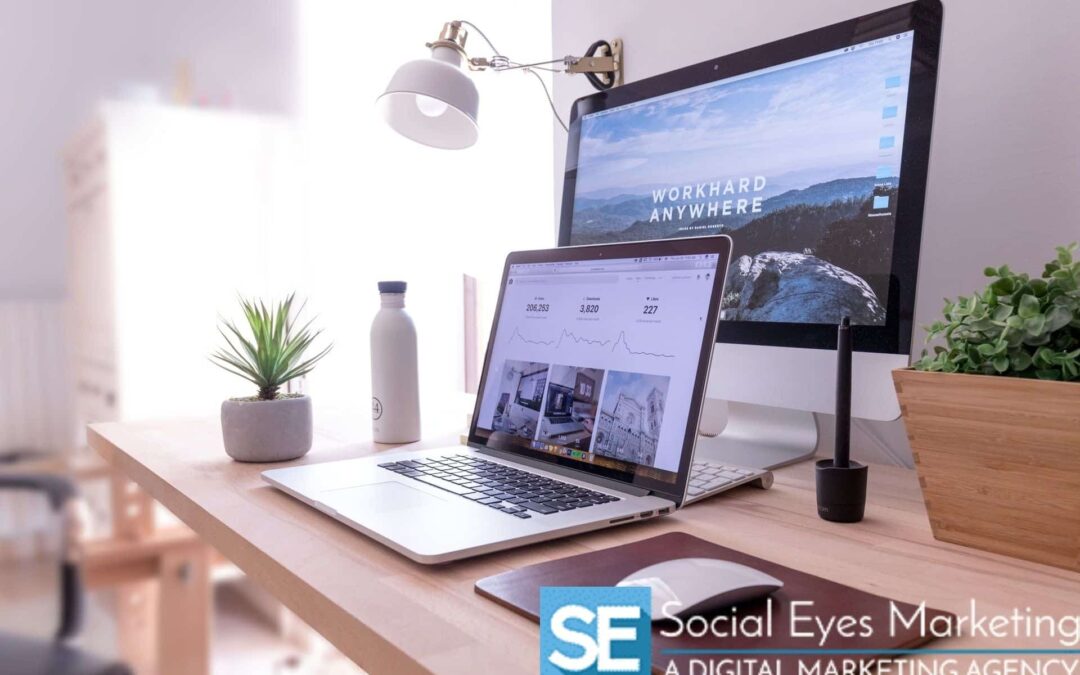It’s 2021. In a world full of digital media, it’s no shock that the design, content, and layout of your website is instrumental in defining people’s perception and belief in the credibility of your brand. It only takes 50 milliseconds for users to form a first impression of your website, which can either make or break your marketing efforts. Your website should be designed to make a good impression as well as capture visitor’s attention. Beyond that, here are 6 factors to keep in mind when designing your website.
First Impressions
It takes no time at all for a customer to form a first impression of your company based on your website, but why should you care? First impressions are important because they last well beyond the moment due to the primacy effect, the phenomenon of remembering the first thing in a sequence more than its subsequent items. Your customers are more likely to remember that a homepage wasn’t up to par rather than the other pages that were.
Making sure your website gives a good first impression is done by making sure it is appealing, user-friendly, and highly responsive with a fast-loading speed. You should be sure that making your website appealing is near the top of your “To-Do” list, because 38% of people will stop engaging with a website if the content or layout is unattractive. Make sure you’re not warding off any potential customers with an unattractive or old-fashioned website.
Useability
A good design is key to a good website, but form follows function. That is to say that you need to consider what your customers are looking to see as you go about designing your website. A web usability report stated that 86% of website visitors look for product or service information, 65% search for contact information, and 52% want to see an “About Us” page. If these pages aren’t as easy to find, your users may potentially become frustrated and leave your website in favor of a competitor’s. Standard conventions, like featuring primary services in your main navigation bar and putting your phone number in the upper-right-hand corner of your site can help make the website more easily usable by your customers.
Web design is complex by nature, so consider partnering with a professional design agency when making your website. They’ll be able to utilize insight into what the customer wants and offer up a website that suits their needs.
Ease of Navigation
There is a principle known as Hick’s Law that states that the duration taken to make a decision is directly proportional to the number of choices given. That is, the more choices you are presented with, the longer it will take you to come to a decision. Hick’s Law should be at the front of your brain when going to design your website. Website design should be simplified, and the number of items your visitors can click on should be reduced so they can easily decide where to go and what actions to take. A good rule of thumb is to only have seven options or less on your page.
Having only seven options on your page may be a bit tricky. When narrowing your choices, take a good look into what your categories are. There might be some that are technically duplicates, or others that can be combined into one larger grouping. Simplify your navigation as much as possible so your visitors have an easy time finding exactly what they need.
Conversion
Conversions are any action taken by a website visitor in response to your call to action. This could include making a purchase, signing up for a newsletter, or even clicking through a slideshow. Your website’s visual design should be optimized for conversion, and there are quite a few ways to do this. One way is to utilize the open space on your page to draw visitor’s attention to your call of action, much like how Apple operates. Another way takes a note from Amazon’s book and utilizes contrasting colors and styles to make important information stand out on even the busiest of pages.
Your goal is to have the power over your audience’s eyes to point them in the direction you want them to be in. If you use this skill correctly, you’ll be able to drive traffic anywhere you want on your webpage, enhance the user experience for your visitors, and experience higher conversion rates.
Brand Credibility
Take a look at these two hallways and think about which one you would rather walk down. If I had to guess, I’d say you picked the one on the right. It is bright and clean, whereas the left choice is dark and scary. Web design is kind of like these hallways, just without the fear of tetanus. Modern, professional designs promote trust and brand legitimacy, while outdated, poorly designed websites make users doubt your credibility.
A Stanford Web Credibility Research study found that 75% of judgments about a company’s credibility are based on the company’s website design. It also found that 46% of consumers base their decisions about the credibility of a website from its visual aesthetics. Knowing this, make sure that your logo, colors, fonts, and general style are all visually appealing to keep your website professional and consistent.
Mobile Friendliness
Google is pushing a mobile-first approach. A report from Hitwise revealed that nearly 60% of all online searches happen on mobile devices. 85% of adults think a mobile website should be just as good if not better than its desktop version. The facts are piling up, it’s extremely important to have a well-designed mobile website.
Don’t get caught up in only designing your website for desktop functionality. In our mobile-friendly world it is more important than ever to have a reliable website that functions no matter what size of screen it lands on.
It’s a good idea to work with a website developer as you go about designing your page. Web Developers like Social Eyes Marketing work with you to turn consumers into customers and create a memorable experience for anyone visiting your website. Put your content directly in front of your target audience and turn your website into a lead generating machine! Go ahead and give us a call to get a quote for our professional design service.


